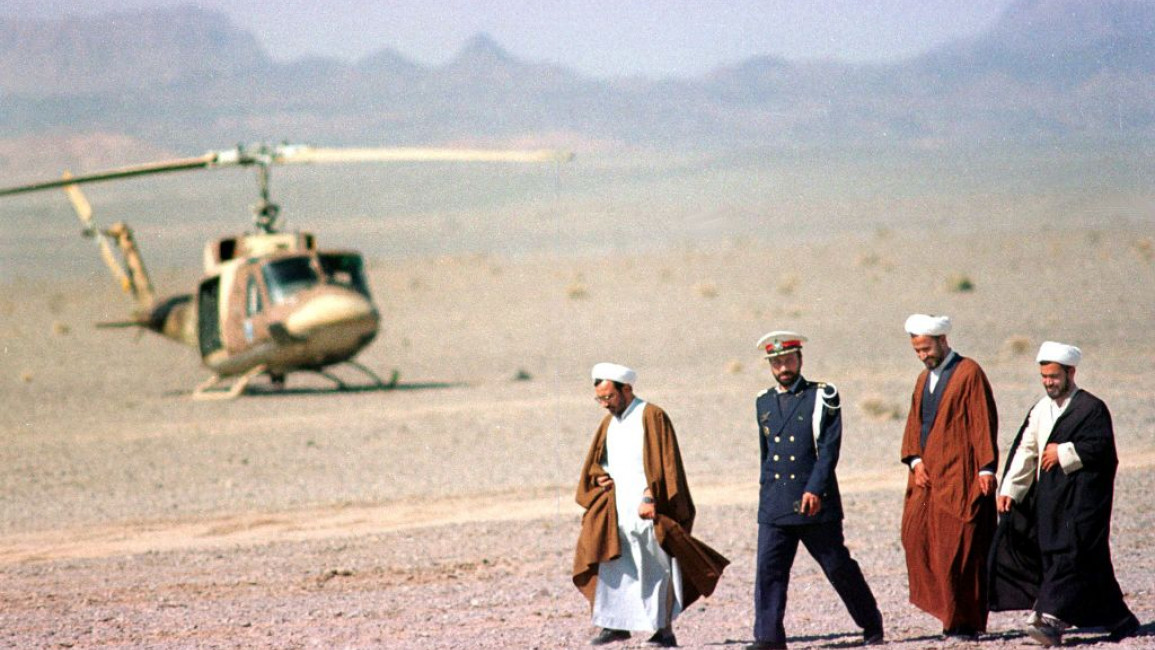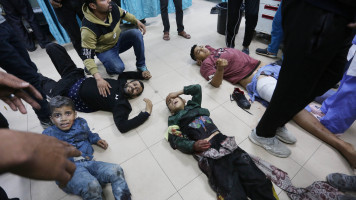Explainer: How Iran's 'miscalculation' opened the way for Taliban's territorial claims
Since the resurgence of the Taliban to power in Afghanistan, an ongoing military confrontation has persisted between Taliban fighters and Iran's Islamic Revolutionary Guard Corps (IRGC) at the border separating the two countries.
Over the past two years, these confrontations have claimed the lives of military personnel and civilians on both sides, while each country accuses its neighbour of initiating gunfire.
The conflict revolves around over 2,000 hectares of agricultural land within Iran. This land is situated between a border wall constructed by Iran on its own territory to curb narcotics, petrol, and human trafficking. Many Iranian experts believe erecting the wall was a "grave miscalculation".
Construction undertaken by the IRGC-affiliated contractors began in 1998 when the Taliban held power in the capital Kabul. The project was completed in 2003, during which Western armies had pushed the Taliban fighters back into Afghanistan's high mountains and rural areas.
However, two decades after those events, the wall not only succeeded in obstructing smuggling routes but also became a new challenge for Iranian authorities trying to maintain control over their territory.
Two years of border conflict
The armed clashes along the Iran-Afghanistan border erupted only three months after the fall of the US-backed government in the Afghan capital.
In August 2021, the Taliban fighters seized control of the entire country through a rapid military campaign after a two-decade war. As the Taliban marched the country, the Afghan army, funded and trained by Americans and NATO, collapsed in less than two months.
Throughout the twenty-year guerrilla warfare waged by the Taliban against the US and its Western allies, Tehran supported the group, even offering sanctuary to the family members of some of its high-ranking commanders on the run.
The friendly relationship between Iranian authorities and the Taliban did not start immediately after the US invasion of Afghanistan.
When former US President George W. Bush ordered the attack on Afghanistan, Iran, under the leadership of President Mohammad Khatami (1997-2005), discreetly extended logistical and informational support to the coalition forces combating the Taliban.
However, in 2002, circumstances took a turn following Bush's State of the Union address, wherein he labelled Iran, Iraq, and North Korea as an "Axis of Evil." Consequently, as American forces attacked Iraq the year after, Iranian authorities felt the threat of US military forces drawing closer.
This prompted Tehran to foster an unofficial relationship with anti-US military groups in Iraq and Afghanistan.
The Afghan Taliban greatly benefited from this alliance, and Iran became a sanctuary for its fighters and commanders. Nevertheless, immediately after the Taliban's victory in Afghanistan, it redirected hostilities eastward, targeting Iran in December 2021.
Reacting to the border clashes in the Shoghalak region, Iranian officials stated that the Taliban fighters had opened fire on Iranian farmers and IRGC forces due to a "border misunderstanding" about the precise border location. Officials added they were "clarifying the border situation for the Taliban."
However, two years after that incident, Iranian officials had not succeeded in convincing their Afghan counterparts of the border demarcation, and the border conflict persisted. It climaxed on 27 May when the Taliban killed two Iranian border guards in the Zaranj region.
Public outcry over authorities' approach to the Taliban
Over the past two months, the Iran-Afghanistan border has remained relatively calm. However, in mid-August, public attention was again focused on the authorities' conciliatory stance toward the Taliban and the fate of lands beyond the border wall. This interest arose as the Taliban refused to give Iran water rights from the Hirmand River.
On 18 August, Molavi Mohammad Hussein Gorgij, a Sunni Baluch cleric and a religious leader known for his opposition to the establishment, denounced the authorities' "feeble response" to the Taliban's claims on Iran's territory and water sources.
In his address, he accused the authorities of constructing the wall to generate profits for contractors affiliated with the IRGC. Instead of seeking a response from Iranian officials, he directly addressed the Taliban, saying, "You may withhold our water rights, but abstain from occupying our farmlands."
Pir Mohammad Molazehi, a prominent Iranian expert on Afghanistan, also emphasised that erecting the wall was a "grave mistake." He urged officials to respond robustly to the Taliban's claims and accused the Iranian side of "inaction" against the Taliban.
In reply to statements from Iran's foreign ministry officials, asserting that Iran had not conceded any territory to the Taliban, Molazehi stressed: "Now the Taliban considers the very wall we erected as the boundary line, and the declarations of Iranian officials hold little significance."
He concluded, "To test their convictions, I propose that members of Iran's diplomatic team visit the borderline and ascertain whether, without Taliban consent, they can go to the other side of the wall."



